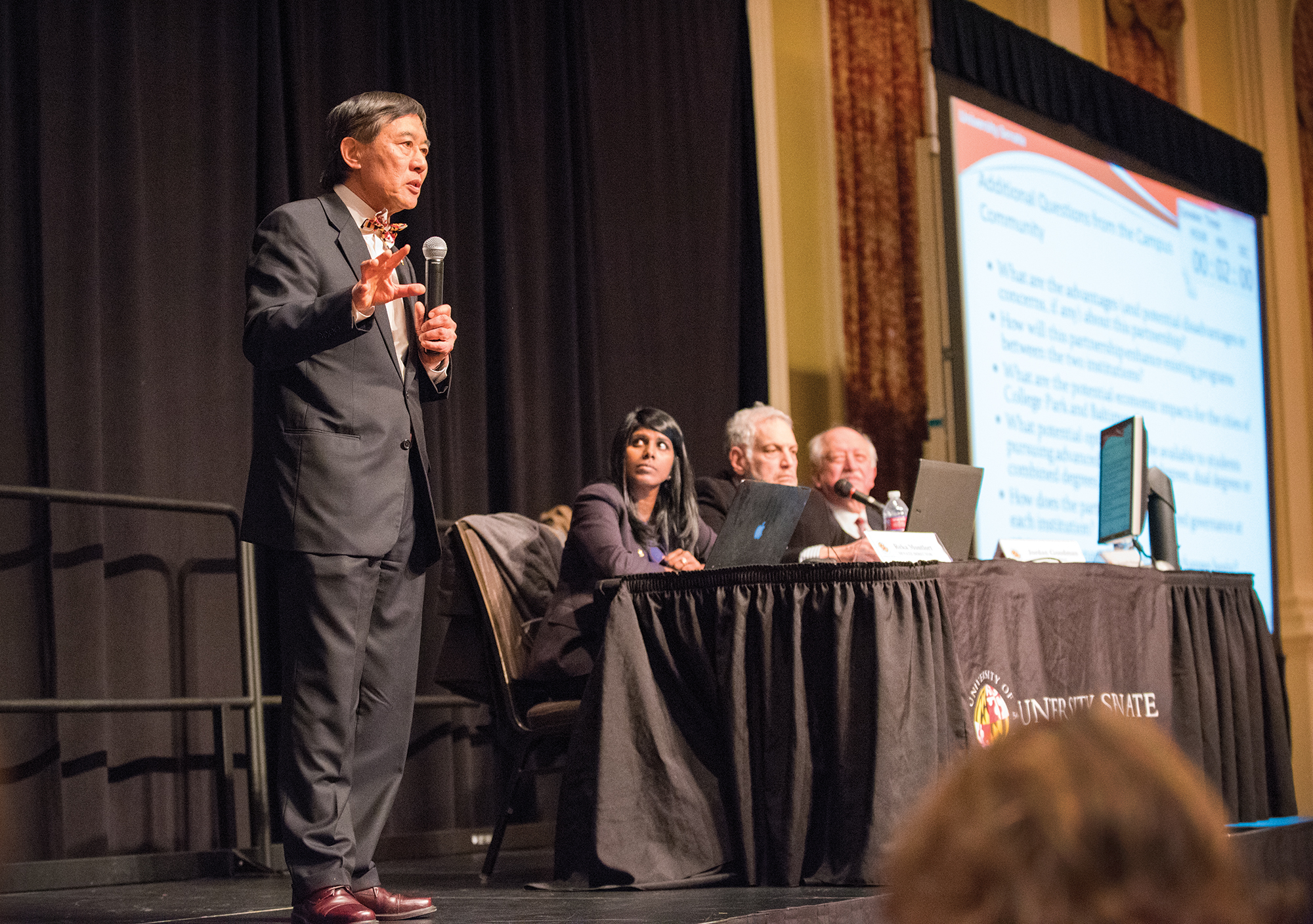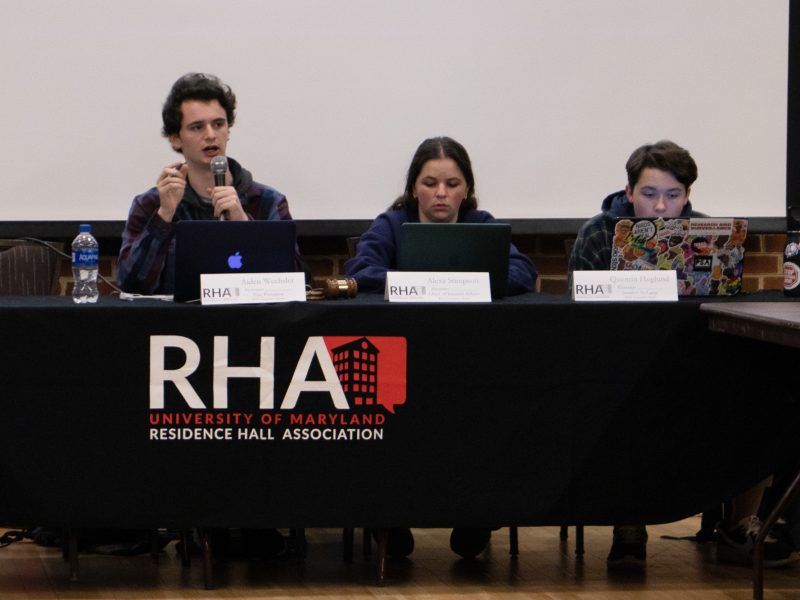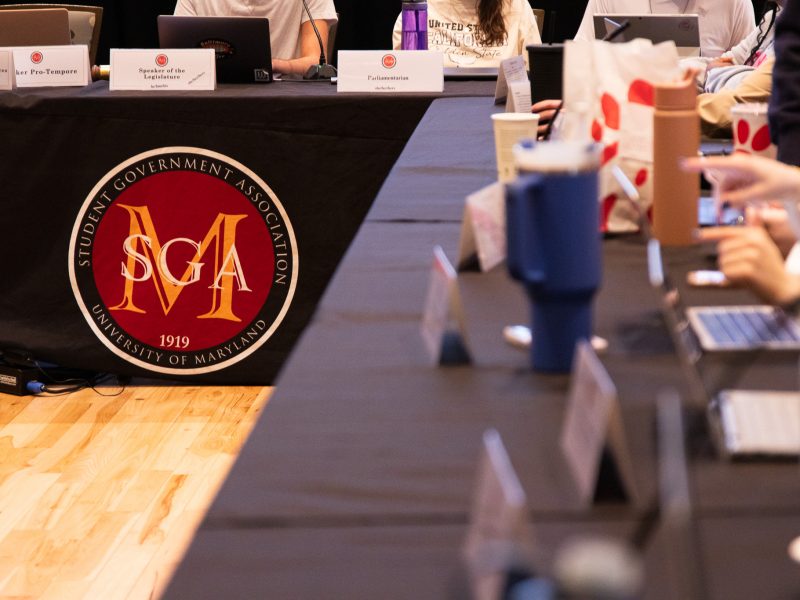The University of Maryland community had an opportunity Thursday to air questions and concerns about the state’s Strategic Partnership Act of 2016, which could potentially unite this university and University of Maryland, Baltimore into one university with two campuses.
At a forum held by the University Senate, university President Wallace Loh responded to wide-ranging queries from students, faculty and staff, including when the university could begin to see effects of a strengthened partnership if state bill becomes law, how it might affect Baltimore and whether it would impact current faculty.
The proposed bill was introduced to the state legislature Feb. 18 and the Senate Budget and Taxation Committee heard testimonies on the bill Tuesday from university representatives and students, in addition to UMB officials, city business leaders and University System of Maryland members.
The proposed partnership would build upon collaborations that emerged as part of the MPower program, Loh said, describing the bill as “evolutionary, rather than revolutionary.” A previous effort to unite the universities began shortly after Loh took his position as president, he said, but “it went nowhere.”
In the forum Thursday, Endrias Samson, a sophomore enrolled in letters and sciences, asked about the potential time frame for classes from the nursing school at UMB to be offered on the College Park campus.
Loh said the strengthened partnership could take upward of 10 years to implement.
“It is not going to happen anytime soon,” he said. “In my crystal ball, it will be 10 to 15 years.”
Jerry Miller, a chemistry professor and former chairman of the University Senate, said he opposed the act “on the basis of 50 years of experience on this campus,” stating he believed the university could not operate under remote or shared management.
“Frankly, College Park has great challenges [that] require very strong, talented academic leadership at all levels right here in College Park,” Miller said.
The proposed legislation includes a clause that would allow for the combined University of Maryland to, in the future, have one president to preside over both campuses. The clause has been a cause of concern for stakeholders worried about how a president in College Park could oversee the Baltimore campus and vice versa.
In Tuesday’s committee hearing, UMB President Jay Perman praised increased collaboration between the universities but expressed serious reservations about the nature of combining personnel into one president and administration.
Loh acknowledged these concerns Thursday but suggested they need not be a reason to oppose the bill.
“In this day and age … I don’t know that a 40-mile gap should be a barrier to close collaboration,” Loh said. “Whether or not you revitalize this university does not depend on where you sleep.”
In response to pre-approved questions based on online submissions, Loh said the union would not necessarily directly impact the status of jobs. The possibility of losing jobs, he said, will occur regardless of whether the two institutions are combined.
“On average, we hire about 600 to 800 people every year due to normal turnover,” he said. “If there were streamlining … we don’t necessarily have to think that these … people are going to be laid off.”
He went on to call the university’s potential role in Baltimore a “win-win” for the city and the campus. Perman and other UMB representatives Tuesday emphasized the role of their campus in the inner city and the importance of maintaining long-established ties with marginalized communities.
Senior sociology major Rhys Hall praised the forum, which he called productive, and added that he is personally interested in the potential union.
“If anything, it was productive to see an environment where people could express opposition,” Hall said. “I don’t want to make a ruling unless I can hear things directly from the president’s mouth, and I think today was a great opportunity for that.”



